
Paston Great Barn is a medieval barn near Paston Hall on the southeast edge of the village of Paston, in northeast Norfolk. It is owned by the North Norfolk Historic Buildings Trust. It dates from 1581 and is associated with the Paston family. It is a Scheduled Ancient Monument and a grade II* Listed Building. It is also a 1-hectare (2.5-acre) biological Site of Special Scientific Interest, a National Nature Reserve and a Special Area of Conservation. It is in the Norfolk Coast Area of Outstanding Natural Beauty.

The western barbastelle, also known as the barbastelle or barbastelle bat, is a European bat in the genus Barbastella. This species is found from Portugal to Azerbaijan and from Sweden to Canary Islands, where a sub-species was identified. It has a short nose, small eyes and wide ears. The conservation status of B. barbastellus is assessed as "Near Threatened", "Vulnerable", "Critically Endangered" or "Extinct" in various parts of its range.
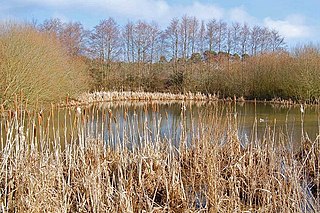
Ebblake Bog is a 11.3-hectare (28-acre) biological Site of Special Scientific Interest in Dorset and Hampshire, located west of Ringwood. It is part of Dorset Heathlands Ramsar site and Special Protection Area, and of Dorset Heaths Special Area of Conservation,

Bourley and Long Valley is a 823.5-hectare (2,035-acre) biological Site of Special Scientific Interest between Fleet and Aldershot in Hampshire. It is part of Thames Basin Heaths Special Protection Area for the conservation of wild birds.

Ebernoe Common is a 233.9-hectare (578-acre) biological Site of Special Scientific Interest in Ebernoe, north of Petworth in West Sussex. It is a Nature Conservation Review site, Grade I, a National Nature Reserve and a Special Area of Conservation. It is managed by the Sussex Wildlife Trust

Eversden and Wimpole Woods is a 67.1 hectare biological Site of Special Scientific Interest between Kingston and Orwell in Cambridgeshire. The site has been designated a Special Area of Conservation for its barbastelle bats.
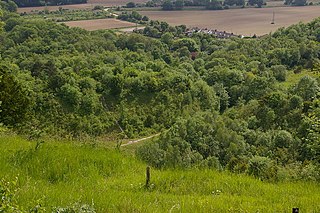
Brockham Limeworks is a 45-hectare (110-acre) nature reserve north of Brockham in Surrey. It is owned by Surrey County Council and managed by the Surrey Wildlife Trust. Part of it is a Scheduled Monument, and it is part of the Mole Gap to Reigate Escarpment Site of Special Scientific Interest and Special Area of Conservation.
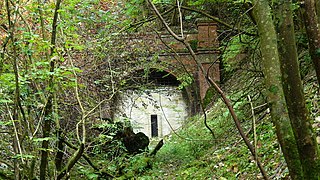
Singleton and Cocking Tunnels is a 1.9-hectare (4.7-acre) biological Site of Special Scientific Interest between Chichester and Midhurst in West Sussex. It is also a Special Area of Conservation.
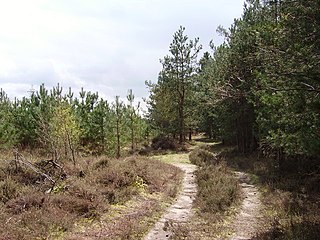
Bramshill is a 673.3-hectare (1,664-acre) biological Site of Special Scientific Interest near Bramshill, northeast of Basingstoke in Hampshire. It is part of Thames Basin Heaths Special Protection Area for the conservation of wild birds.

Broxhead and Kingsley Commons is a 105.1-hectare (260-acre) biological Site of Special Scientific Interest north of Lindford in Hampshire. It is part of Wealden Heaths Phase II Special Protection Area for the Conservation of Wild Birds and Broxhead Common is a 41.8-hectare (103-acre) Local Nature Reserve.
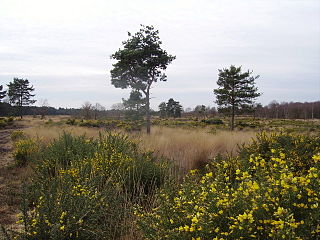
Castle Bottom to Yateley and Hawley Commons is a 922.7-hectare (2,280-acre) biological Site of Special Scientific Interest north of Fleet in Hampshire. It is part of Thames Basin Heaths Special Protection Area for the conservation of wild birds and an area of 30.8 hectares is designated a National Nature Reserve called Castle Bottom.

Coombe Wood and The Lythe is a 44-hectare (110-acre) biological Site of Special Scientific Interest west of Bordon in Hampshire. It is part of East Hampshire Hangers Special Area of Conservation and Combe Wood is a National Trust property.

Duncroft Farm Pit is a 0.1-hectare (0.25-acre) geological Site of Special Scientific Interest west of Kingsclere in Hampshire. It is a Geological Conservation Review site.

Eelmoor Marsh is a 66.3-hectare (164-acre) biological Site of Special Scientific Interest between Fleet and Farnborough in Hampshire. It is part of Thames Basin Heaths Special Protection Area for the conservation of wild birds.

Greywell Fen is a 38-hectare (94-acre) biological Site of Special Scientific Interest in Greywell in Hampshire. It is a Nature Conservation Review site, Grade 2, and an area of 13 hectares is a nature resserve called Greywell Moors, which is managed by the Hampshire and Isle of Wight Wildlife Trust.
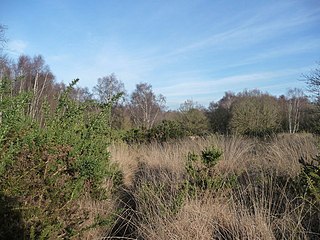
Hazeley Heath is a 180.8-hectare (447-acre) biological Site of Special Scientific Interest west of Farnborough in Hampshire. It is part of Thames Basin Heaths Special Protection Area for the conservation of wild birds.

Hurst Castle and Lymington River Estuary is a 1,077.3-hectare (2,662-acre) biological and geological Site of Special Scientific Interest near Lymington in Hampshire. It is a Nature Conservation Review site and two areas are Geological Conservation Review sites. Three areas are Local Nature Reserves, Boldre Foreshore, Sturt Pond and Lymington and Keyhaven Marshes; the latter site is managed by the Hampshire and Isle of Wight Wildlife Trust. Part of it is North Solent National Nature Reserve. It is part of Solent and Southampton Water Ramsar site and Special Protection Area. Parts of it are in Solent Maritime and Solent and Isle of Wight Lagoons Special Areas of Conservation.

Lee-on-The Solent to Itchen Estuary is a 585.9-hectare (1,448-acre) biological and geological Site of Special Scientific Interest which stretches along the ooast between Southampton and Gosport in Hampshire. It is a Geological Conservation Review site. It is part of Solent and Southampton Water Ramsar site and Special Protection Area, and of Solent Maritime Special Area of Conservation. Three areas are Local Nature Reserves, Chessel Bay, Hook with Warsash and Mercury Marshes. One area is Hamble Common Camp, a Scheduled Monument.


















